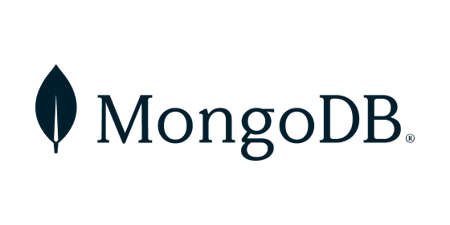
Client:Mongo DB
Industry:High Tech
Region:Global
MongoDB’s future with automation and AI

$7 million
in cost savings over three and a half years
230,000
working hours saved to date, the equivalent of 110 full-time employees
120+
automations deployed within a 36-month period
Client Overview
The creator of the world's most versatile developer data platform, MongoDB is on a mission to empower innovators to create, transform, and disrupt industries by unleashing the power of software and data. With tens of thousands of customers in over 100 countries, the MongoDB database platform has been downloaded hundreds of millions of times.
Partner

Laborious, repetitive, manual tasks. They don’t just waste time—they’re a source of frustration for the skilled teams who have to carry them out. For a company with major growth ambitions—like MongoDB—they’re also something much worse: a barrier to scale.
“When you want to be a multi-billion-dollar business like we do, you need to be able to scale effectively,” said Devika Saharya, Director of Business Systems at MongoDB. “That’s why we created a dedicated team to hunt down the obstacles that might stand in our way.”
What they found, according to Saharya, was manual work—and lots of it. In MongoDB’s accounting team alone, accruals, allocations, and more were taking up hundreds of hours of skilled resources. Change arrived in the form of the UiPath Platform™.
Transforming the day job
One of the first tasks to be transformed was standard revenue write-ups. This mandatory process requires a detailed audit spreadsheet to be drawn up for any deal worth more than $1 million. Before UiPath, that process took around seven or eight days for the accounts team to complete. Post-automation, the figure dropped to just a few hours.
“That’s the kind of transformative saving we were looking for,” explained Saharya. “It was also the early success we needed to demonstrate the impact that automation and the UiPath Platform could have.”
The impact has extended beyond the finance team. MongoDB’s P&G system was being decommissioned by the human resources (HR) team. Forty thousand documents had to be transferred to a new system being used to consolidate HR processes. Without automation, a team member would have to download each file locally, and then upload the file into the correct location in the new system. It would have taken at least five months. With the UiPath Platform, it took around 12 days.
“The baseline capabilities of UiPath have been our bread and butter. But we’ve been able to go further using UiPath Document Understanding™ and GenAI,” said Saharya.
A great example of this is MongoDB’s dual signature verification process. The finance team reviewed several hundred order forms every quarter to make sure signatures are present from both the customer and MongoDB. This took hours. And because the process couldn't be performed daily, delays were inevitable. With Document Understanding now validating the process—checking whether the right signatures are there—the manual work has disappeared.
Working closely with both MongoDB and UiPath to ensure that every step of its journey is aligned with long-term success, implementation partner Lydonia is helping the company not just adapt, but thrive in an evolving digital landscape.
When we think of excellence in automation, MongoDB consistently stands out. [...] Its forward-thinking approach to leveraging AI and automation has driven transformative outcomes across the organization.
Kevin Scannell, Founder & CEO of Lydonia
Saving time, creating value
As efficiency-boosting as these automations have been, Saharya saw a larger impact. “When we take those tedious tasks away from people, we’re freeing them up to add value elsewhere,” she continued. “One of the main areas we’re now seeing that value manifest is in our ability to think strategically.”
To illustrate the point, Saharya highlighted automation’s role in helping the company close its books up to 50% faster. Highly skilled finance professionals are using the time saved to explore new process improvements and better ways to work.
This same continuous improvement approach is happening in MongoDB’s other teams, too. In sales, for example, the company’s customer relationship management (CRM) system is being cleaned up to remove multiple listings of the same customer. “Giving people the time to think about different ways to sell is infinitely more valuable than having them hunt down errors in a database,” said Saharya.
In the first couple of years that we were partnering with UiPath, we saved around 150,000 hours total. Now, we’re on track to save 150,000 hours just this year—that’s the equivalent of freeing up an entire department in process time alone.
Devika Saharya, Director of Business Systems
Then, there’s the accuracy element to consider. Across finance, HR, and sales, the prospect of transferring or rekeying data heightens the risk of error. With the UiPath Platform, that’s no longer an issue. “Our people are still in the loop, they’re just in a more strategic position,” she said. “They’re there to validate and approve the data, not enter it.”
Jumping ahead into an AI-powered future
While the company has already achieved much on its automation journey, the future looks brighter still.
While the company has already achieved much on its automation journey, the future looks brighter still. “MongoDB’s commitment to driving innovation through automation has been a standout. Its ability to integrate AI and automation into core operations has delivered transformative results—redefining efficiency and productivity across the organization,” said Scannell.
Two recent initiatives highlight this appetite for innovation. MongoDB has embraced the broader capabilities of the UiPath Platform—leveraging AI to intelligently process documents using Document Understanding.
While MongoDB has already achieved much on its automation journey, the future looks brighter still. Two more recent initiatives have seen the company embrace the broader capabilities of the UiPath Platform—leveraging AI to intelligently process documents using UiPath Document Understanding™.
“We process thousands of orders every month,” continued Saharya, “and every one of those orders needs a signature from us and the customer.” Before UiPath, that responsibility sat with the company’s order-to-cash team. With Document Understanding scanning every invoice and checking for the presence of authorizing marks, task completion rate has increased 90%.
Invoices are the focus of MongoDB’s second AI-powered use case. Here, Document Understanding takes an invoice, analyzes the data, and feeds it straight into the company’s finance system. Despite being in its early stages, Saharya has seen the concept generate a lot of excitement within the company. “It shows just how easy it is to tap into the power of AI with UiPath,” she said.
Reading invoices. Generating reports. Clicking ‘submit’. These aren’t rewarding tasks, they’re just things that need to be done. With the UiPath Platform, our people get to go home knowing that they’ve really been able to contribute.
Devika Saharya, Director of Business Systems
Scaling up automation to scale up growth
MongoDB has saved more than 150,000 working hours—and generated over $1.5 million in cost savings—since it began its automation journey three years ago. It’s set to save the same amount again. This time in just 12 months.
At Lydonia, we’ve been fortunate to collaborate with both MongoDB and UiPath on this journey—supporting their efforts to achieve impactful, organization-wide improvements. MongoDB sets a high standard for what success in automation looks like.”
Kevin Scannell, Founder & CEO, Lydonia
More than anything, these successes speak to MongoDB’s ultimate goal: to break through those barriers to scale. “When you’re a 5,000-strong company on an upward trend, you need skilled, passionate people doing the tasks that actually capitalize on their abilities,” she said.
“Now, thanks to UiPath, we do.”
Related case studies
Ready for your own case study?
Speak to our team of knowledgeable experts and learn how you can benefit from agentic automation.





